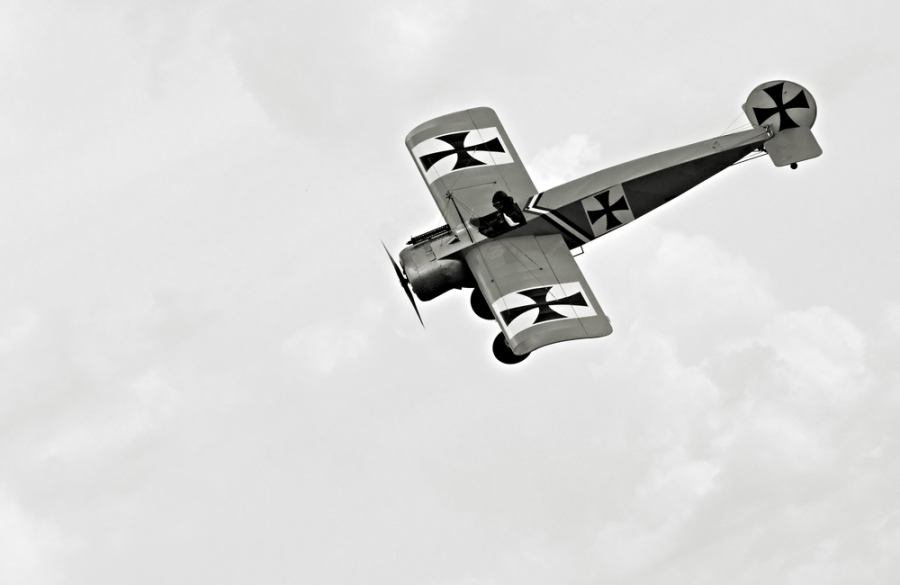In the early days of the Great War, enemy pilots greeted each other with a friendly wave. Then the value of aerial observation became clear: in August 1914 the Germans routed the Russian Second Army at Tannenberg in East Prussia, partly because their aircrews reported every Russian movement.
News of the power of the eyes in the sky spread quickly. Now the enemy pilot wasn’t a friend in the air, but a threat to the men on the ground – and he had to be prevented from observing and reporting. Pilots armed themselves with rifles and pistols, but it was almost impossible to hit the enemy, far less to shoot him down. The deflection was far too complicated with both aircraft moving in three dimensions – and how could you fly and fire at the same time?
The ideal would be to aim the aircraft, and to have a machine-gun – but the propeller got in the way. The British solved the problem with the pusher layout, but these aircraft were slow. Then a French pilot, Roland Garros, fitted deflector plates to his propeller so that bullets would glance off rather than destroying it. The system worked but had its disadvantages.
Garros achieved three victories but was shot down and his aircraft captured intact. The Germans realised the limitations of his method, and Antony Fokker developed a method of synchronising the gun to the propeller. This was fitted to the Fokker Eindecker monoplane in mid 1915, and the modern fighter aircraft was born.

